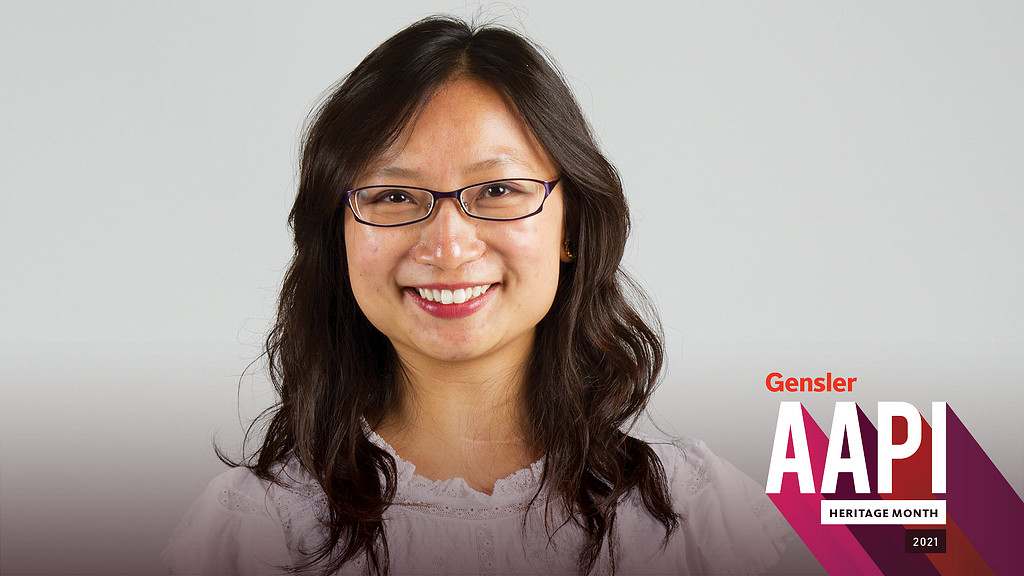Gensler Voices: Fannie Cheung, Gensler San Francisco
May 05, 2021
This Q&A is part of a series of interviews with Gensler architects, designers, and others in the firm about their career journey, and the impact that design and architecture can have on our communities and enhancing the human experience. Here, we sit down with Fannie Cheung, technical director, Gensler San Francisco:
What was your first introduction to the field of architecture and design?I grew up in Hong Kong, where spaces are small and buildings are sky-high! So, I grew up immersed and surrounded by urban architecture and skyscrapers. My favorite buildings of all times are still the HSBC Bank by Norman Foster, and the Bank of China by I.M. Pei in Hong Kong because they were part of my childhood. Pei was the catalyst for why I became an American architect.
What was an early experience that influenced your career path?I always wanted to be a lawyer when I was in Hong Kong. I never thought I’d become an architect, but my family decided to move to the U.S. (New York City) when I was 17. Looking at the college application and starting from Accounting at the top of the application, I stopped at Architecture, as I remember a documentary about I.M. Pei, the late modern architect of Chinese descent. I was inspired and went for it… A good documentary can change lives!
How has your career shaped your understanding of the world?My career as an architect enlightens me to the value and beauty of design — the art of problem solving, and the coexistence of function and beauty together. In balancing both, I always need to listen to different point of views and be empathetic to each. A beautiful, functional building is a “crescendo of consensus.” The world, to live in harmony, is the same way.
How can architecture and design advance wellness, equity, and inclusion?Design should have a purpose, and that purpose should be “good design for everyone and anyone.” In the Gensler universe, we call it universal design. If every design professional has the mindset to give the gift of good design to people of all abilities, to the less fortunate, to every type of project, we will have created a built environment where good design is accessible and universal to everyone. The sense of economic hierarchy in the built environment would be abolished.
What role does architecture and design play in shaping the minds of the future generations?Besides shaping great spaces and buildings, architecture and design also bring to the fore “design thinking” — challenging the status quo and thinking creatively, outside the box, that drives a solution that is both practical and delightful. Think about how the Apple iPhone changed the world by its beautiful design that drives at changing the way we “telephone.”
What type of projects are you currently working on right now, and what do you like best about your recent projects?I am trailblazing on lab projects now! Because of the pandemic, there is a charged renaissance to life sciences. “Lab projects” might sound boring to some, but this is an unknown territory for me that I am excited to master! What I love about my job is that I’m always learning something new. I started my career in small retail interiors, then whole office building for workplace, and then San Francisco International Airport (SFO) Terminal 1, which is the largest project I have participated in to date. The airport is still my favorite project because it is public and thus, provides universal access to good design!
The most important thing I've learned as an architect/designer is...Empathy — listening to and understanding everyone is different. The second, equally important thing is the art of communication: how to collaborate and build consensus by communicating effectively. I see a book idea coming.
If you could choose anyone, who would you like to design a project for?My mom. She is the hardest person to please. Her high expectations have helped shape me into the resilient person that I am. My parents were blue collar workers and to this day, still do not speak any English — and I’ve graduated college and become an American-licensed architect! I am always proud of my lineage — my parents giving up their lives in Hong Kong so my brother and I could flourish in a foreign country where they don’t speak the language. Being able to design a house for them would be a very tangible way of letting them know that their sacrifice has paid off. That as their child, I have made it because of them.
Name a building or space that every designer should see in person.The Sacred Valley in Peru, or Patagonia in South America. We can invent, create, and design all day long but just look at nature! It’s immensely cathartic and humbling.
For media inquiries, email .
